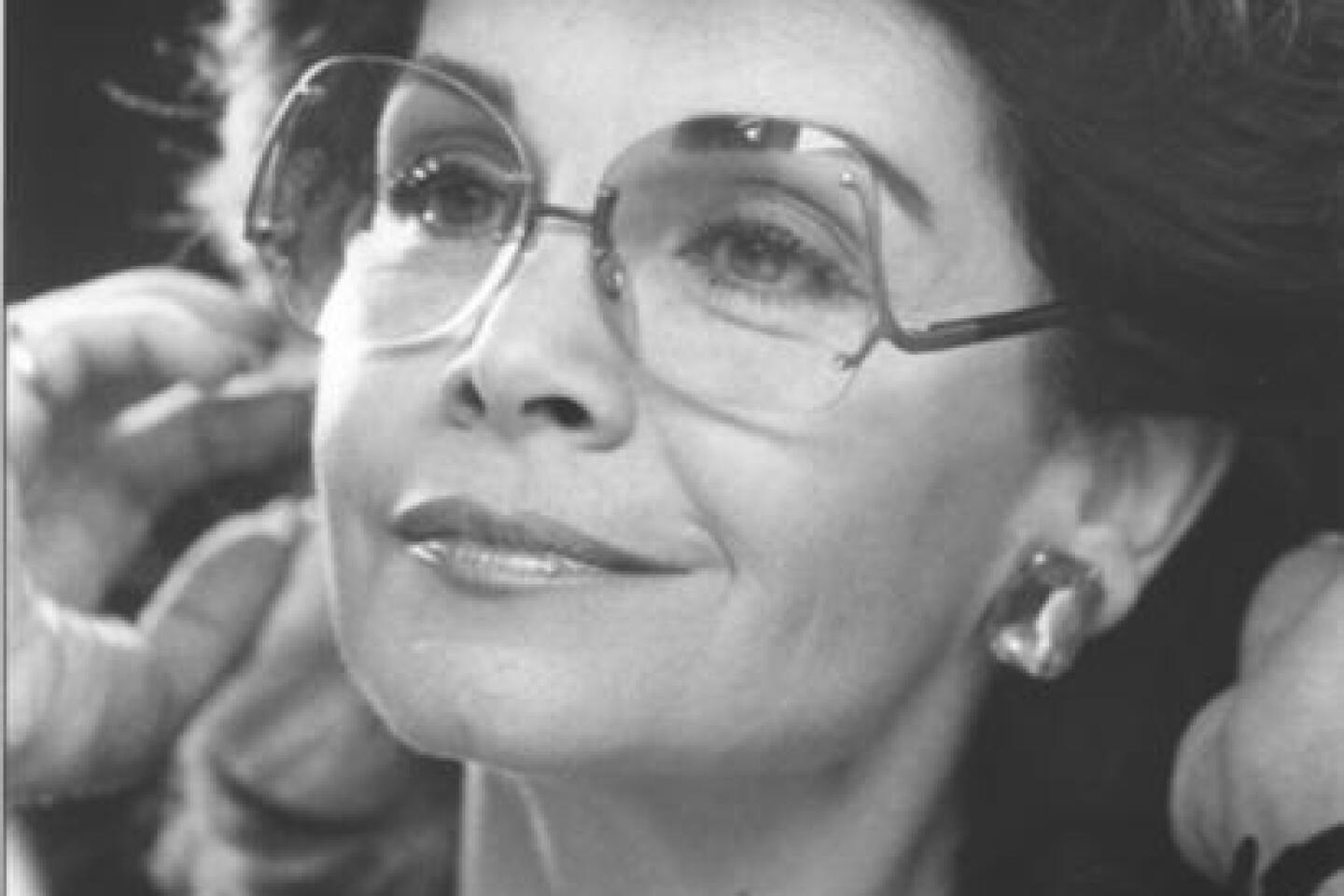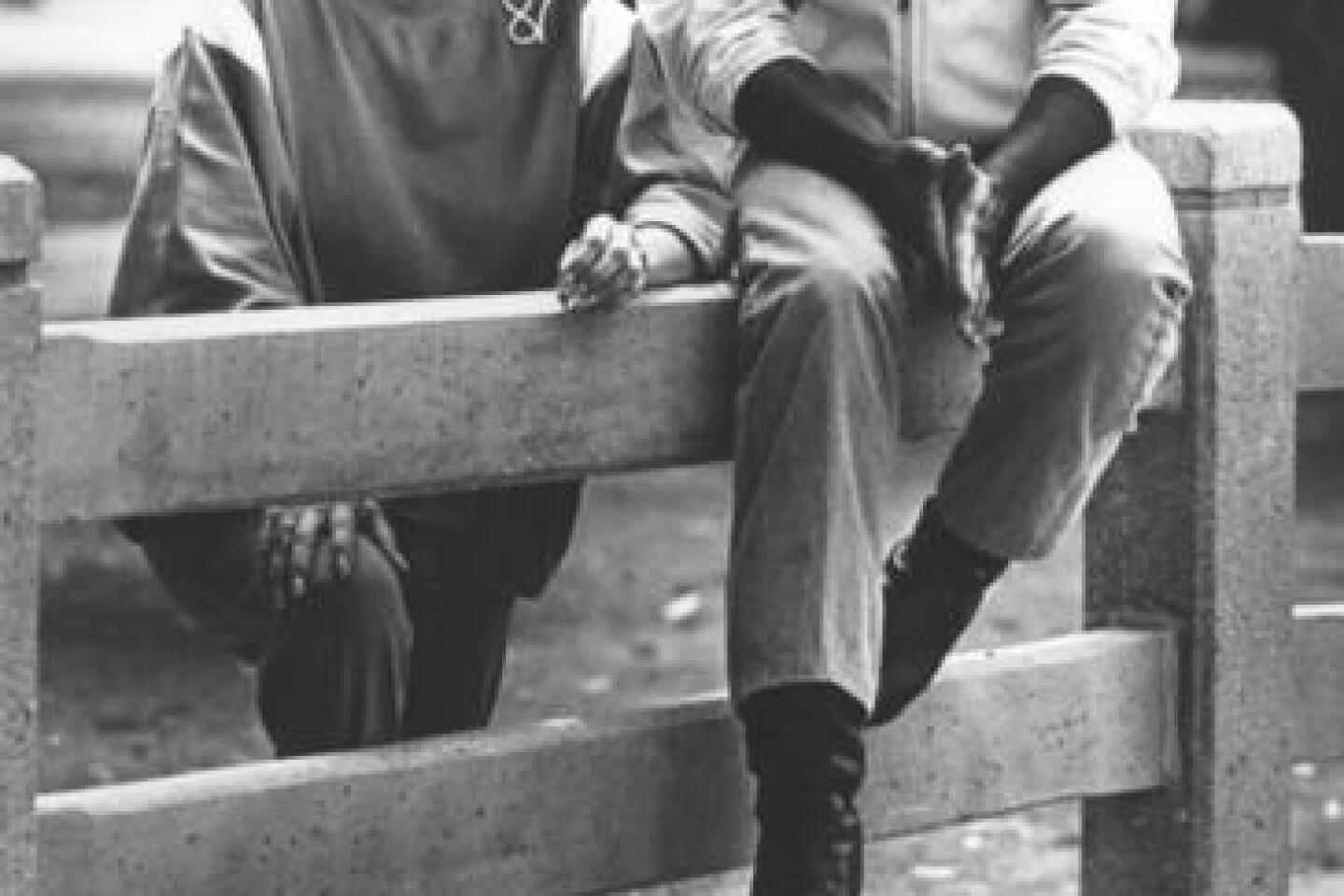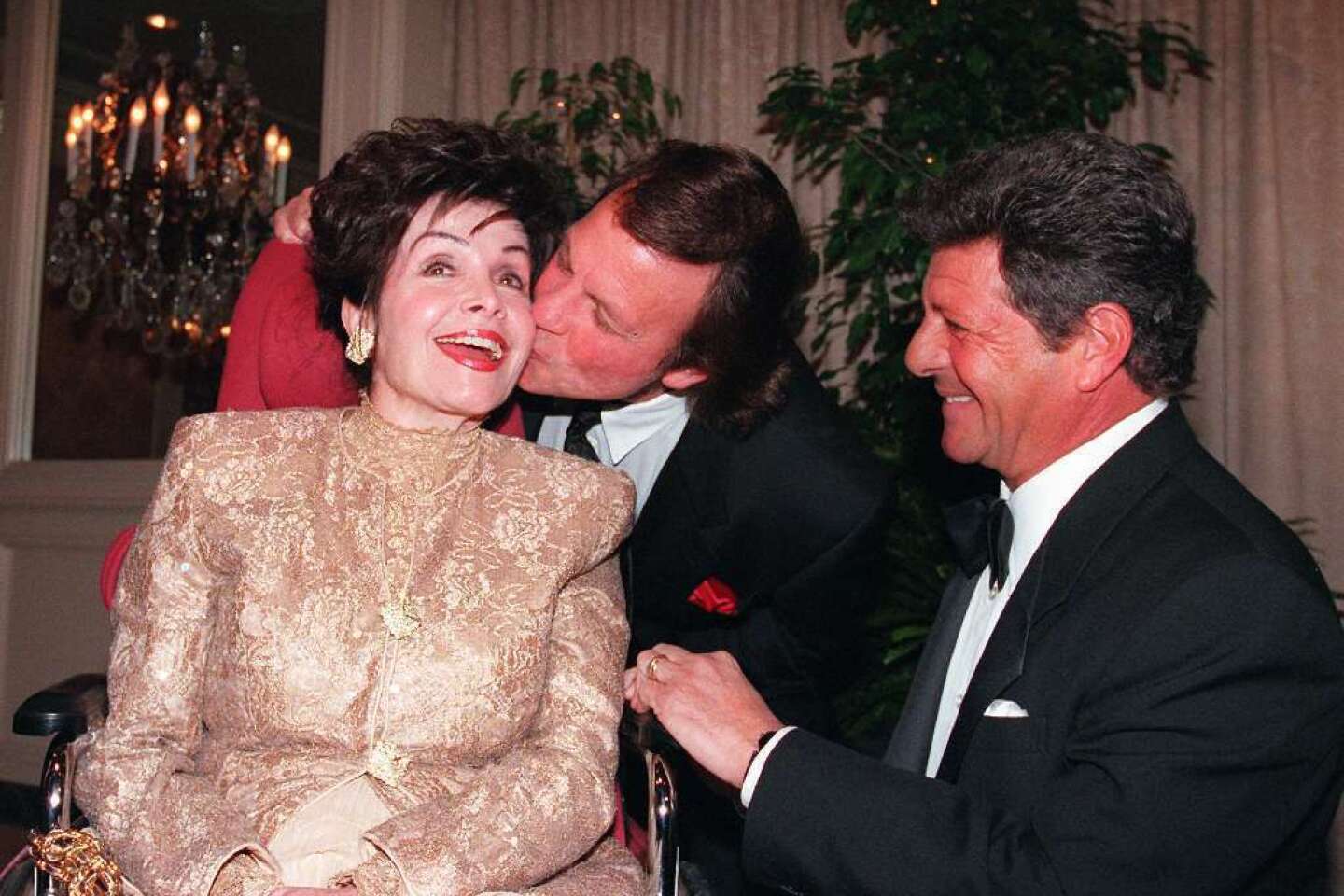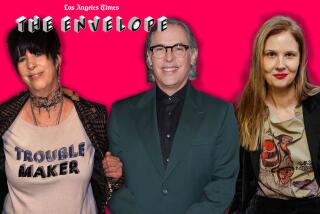Annette Funicello dies at 70; Mouseketeer and ‘beach’ movie star
If you were a girl in the 1950s, Annette Funicello was the ideal of feminine goodness, your fantasy best friend forever. If you were a boy, she was your dream date, demure, doe-eyed and just different enough to set hearts pounding.
The most adored of Walt Disney’s original 24 Mouseketeers, Funicello later exchanged her mouse ears for a swimsuit in a series of 1960s beach movies, but she remained a reassuring figure, fun-loving yet chaste in an era of rapidly shifting social values.
FOR THE RECORD:
Annette Funicello obituary: A caption in the April 9 Section A that accompanied the obituary of Annette Funicello identified the subjects in a beach-scene photograph as Funicello and Frankie Avalon, who starred together in a number of 1960s beach movies. After publication, the wire service that distributed the photo said it could not confirm that the people pictured were, in fact, Funicello and Avalon. —
“She had a heart and a soul and a feeling about her that everybody just connected to — male or female — without being pretentious in any way,” Frankie Avalon, her co-star in movies such as “Beach Party” and “Beach Blanket Bingo,” said Monday. “She was just a nice, nice girl next door ... America’s sweetheart.”
PHOTOS: Annette Funicello’s life in pictures
Funicello, the dark-haired darling of “The Mickey Mouse Club” in the 1950s, died Monday from complications of multiple sclerosis at Mercy Southwest Hospital in Bakersfield. She was 70.
Diagnosed in 1987, Funicello later became a spokeswoman for treatment of the chronic, often debilitating disease that afflicts the central nervous system.
Long before Britney Spears and Miley Cyrus, there was Annette, the last of the original Mouseketeers to be chosen and one of the few hand-picked by Disney himself.
She was a 12-year-old dance-school student when Disney saw her perform the lead role in “Swan Lake” at a recital at the Starlight Bowl in Burbank in 1955. He cast her on “The Mickey Mouse Club,” the children’s variety show that debuted on ABC in October 1955 and quickly became a daily late-afternoon ritual for millions of young Americans.
Like the other female Mouseketeers, Funicello wore a blue pleated skirt, a white, short-sleeved turtleneck sweater with her name spelled out in block letters across her chest and a cap with mouse ears. But there was something special about the Mouseketeer with the curly black hair who became the ensemble cast’s biggest star.
“It may have been partly that she was older, looked more mature, so the young audience that the club appealed to found that very engaging,” said Robert J. Thompson, director of the Bleier Center for Television and Popular Culture at Syracuse University. “Little kids always want to be big boys and girls. And she was so pretty.”
PHOTOS: Notable deaths of 2013
Funicello made her acting debut on “The Mickey Mouse Club” serial “Adventure in Dairyland.” Later she appeared with Tim Considine and David Stollery in the popular “Spin and Marty” serials about a Western dude ranch for boys. In 1958, she was showcased in her own “Annette” serial.
After “The Mickey Mouse Club” ended production in 1958 and went into reruns, the 15-year-old Funicello was the only Mouseketeer to remain under exclusive contract to the Disney studio.
She made her feature-film debut in “The Shaggy Dog,” a 1959 comedy starring Fred MacMurray. It was the first of four Disney feature films she appeared in over the next six years, including “Babes in Toyland” and “The Misadventures of Merlin Jones.”
Funicello launched her recording career in 1958 with a waltz-tempo ballad, “How Will I Know My Love?” In early 1959, her single “Tall Paul” became a top-10 hit. It was followed by other singles such as “O Dio Mio” and “Pineapple Princess.” She also recorded more than a dozen albums.
Funicello, who was the first to concede she was not much of a singer, credited producer Salvador “Tutti” Camarata and the songwriting Sherman brothers, Richard and Robert, for coming up with the idea of double-tracking her voice and adding echo.
“I never liked singing,” she told the Chicago Tribune years later. “I was always so frightened. But the echo chambers and double tracking gave me confidence and made my voice stronger. And it was time for a new sound. Soon, people started copying ‘the Annette sound.’ ”
The fan magazines chronicled her tooling around in her customized 1957 Thunderbird and featured stories on her romance with fellow teen idol Paul Anka, who, Funicello later said, composed “Put Your Head on My Shoulder” and other songs on the piano in the Funicello family’s living room in Encino.
But for all the Hollywood glitz and glamour, Funicello remained the same reserved and relatively sheltered young woman her friends called Annie, who continued living at home until she was married.
“Nowadays when writers profile me for magazines, they write something to the effect that back in those days I ‘represented’ wholesomeness. In fact, though, I lived it, and it wasn’t an act,” she wrote in her 1994 autobiography, “A Dream Is a Wish Your Heart Makes.”
Born Oct. 22, 1942, in Utica, N.Y., she was the first of three Funicello children. In 1946, her auto mechanic father sold his business and the family moved to the San Fernando Valley.
Though painfully shy, Annette began taking dance lessons when she was in kindergarten.
Concerned about her extreme shyness after she became a young star, she once asked Disney if she could see a psychologist.
“Annette,” she recalled Disney telling her, “you have a certain charisma that people respond to. I think your being a little bit shy is part of your appeal. Going to see a psychologist would change that. Why do you want to change that?”
Funicello received a big career boost when Disney agreed to loan her out to American International Pictures to make “Beach Party,” the song-filled, low-budget 1963 comedy, with Avalon.
Though Avalon deemed the script “good clean fun,” Funicello recalled in her book, Disney feared the project would taint her image.
“I see in here that all the other girls are going to be running around in bikinis, which is fine,” he told her. “But Annette, I want you to be different. You are different. I would simply like to request that you not expose your navel in the film.”
Funicello, who wore a bikini around her own pool at home but never in public, replied that she’d be happy to comply with Disney’s request. Long after she left the Disney studio, she spurned efforts to change her wholesome image.
“I’ve been offered roles as a hooker, as a druggie, all kinds of sleazy things,” she told the St. Petersburg Times in 1990. “No, thank you. I always had Walt Disney in the back of my mind, whatever I did. I really considered him a second father.”
For all her success in Hollywood, Funicello yearned to get married and start a family. In January 1965, 22-year-old Funicello married her agent, Jack Gilardi, who was 12 years her senior.
Charles Schulz’s “Peanuts” cartoon strip marked the occasion by showing Linus howling, “I can’t stand it! This is terrible! How depressing ... ANNETTE FUNICELLO HAS GROWN UP!”
While making “How to Stuff a Wild Bikini” with Dwayne Hickman a few months after the wedding, she was already pregnant with the first of her three children.
She made occasional film and TV appearances over the next decades, along with a string of commercials for Skippy peanut butter.
Her marriage to Gilardi ended in divorce in 1982. In 1986, she married Glen Holt, a family friend who bred racehorses. She and Holt lived in her longtime Encino home until it was destroyed in a 2011 fire.
Besides Holt, her survivors include her three children from her first marriage, Gina, Jack Jr. and Jason; two brothers, Michael and Joseph; and three grandchildren.
In 1987, she came out of semi-retirement to reunite with Avalon for “Back to the Beach,” a comedy that poked fun at the “beach party” genre they had popularized. While shooting the movie, Funicello experienced the first inkling that something was physically wrong.
“We’d be shooting a scene on the sand,” she later told People magazine, “and when I’d try to get up, I couldn’t balance. Shortly after that, I noticed that my eyesight was getting worse.”
A neurological exam confirmed that she had multiple sclerosis.
After disclosing her illness in 1992, Funicello formed a fund to benefit research for neurological disease and became a national ambassador for the New York-based Multiple Sclerosis Society.
In 1993, she received her star on the Hollywood Walk of Fame. By then, she needed a walker to get around, but she still radiated the childlike innocence of America’s mouse-eared sweetheart.
McLellan is a former Times staff writer.
Times staff writer Rebecca Trounson contributed to this report.
More to Read
Start your day right
Sign up for Essential California for the L.A. Times biggest news, features and recommendations in your inbox six days a week.
You may occasionally receive promotional content from the Los Angeles Times.











